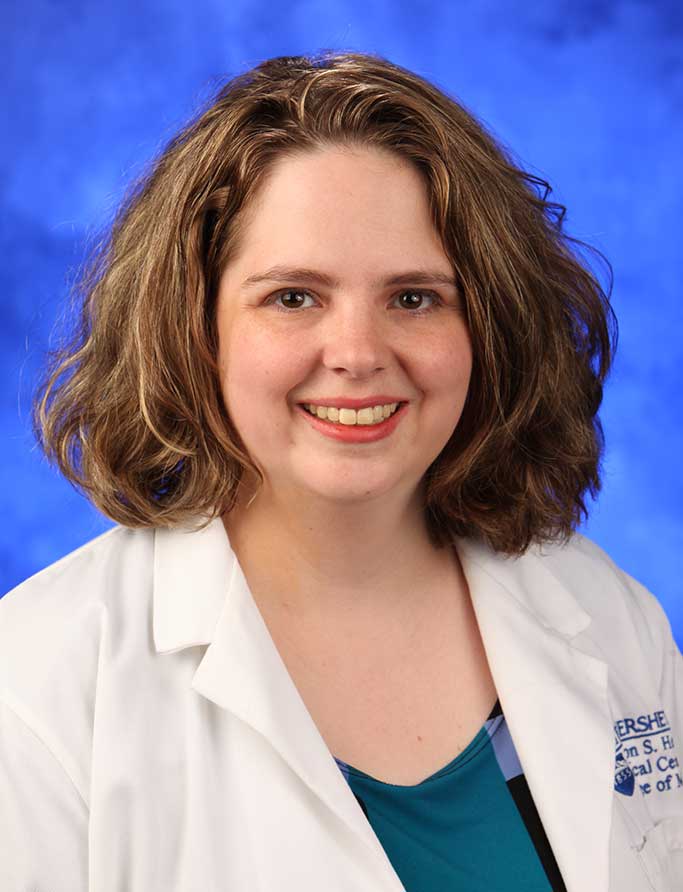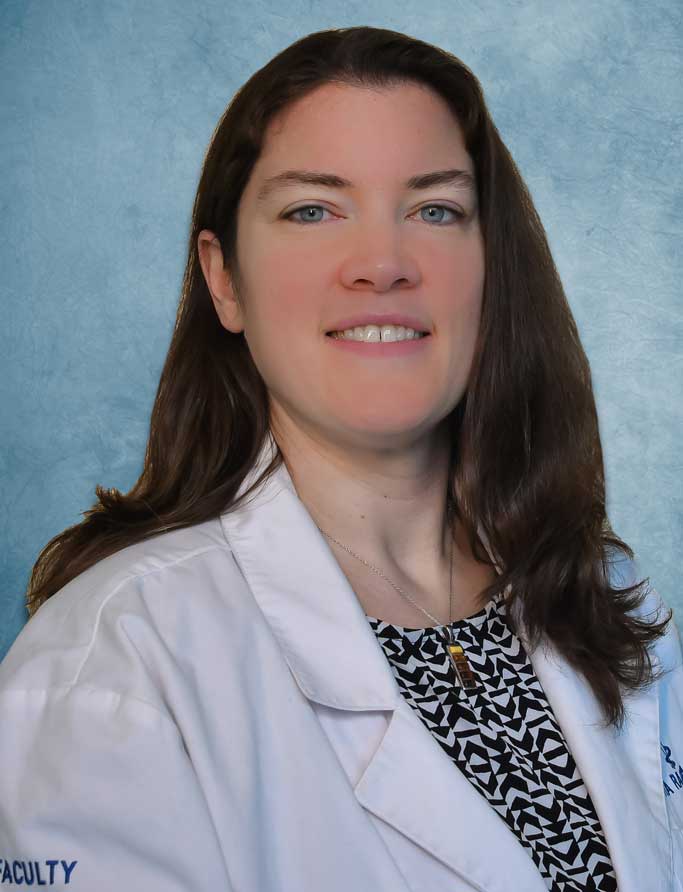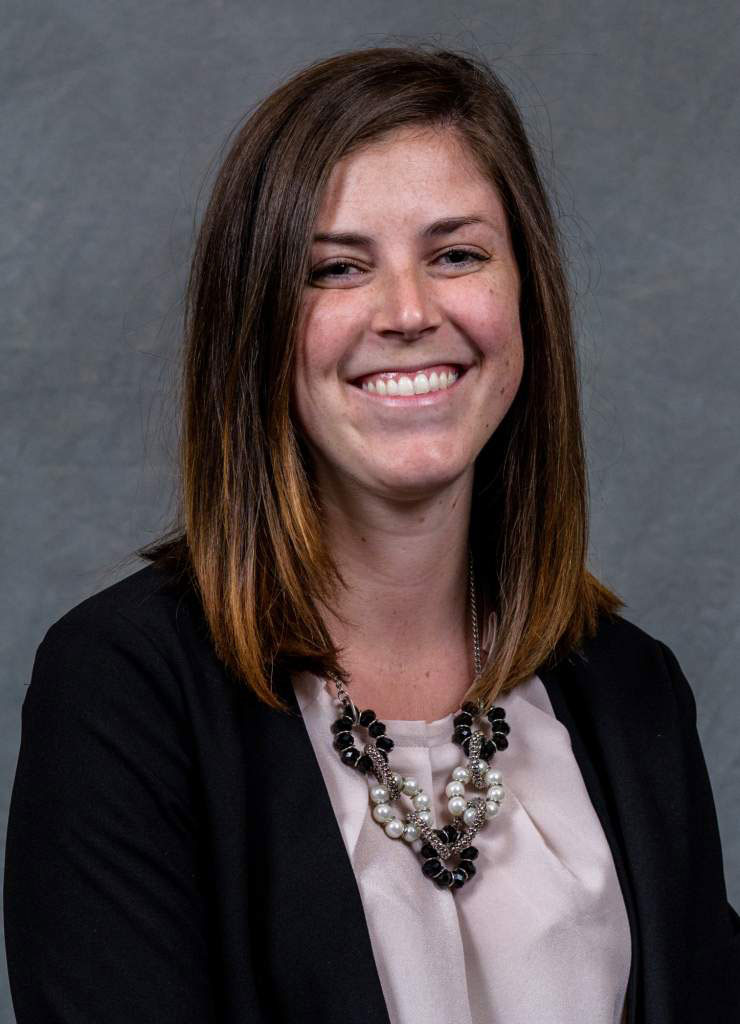Jump to topic
Search
Program Details
Penn State Health St. Joseph Medical Center Family and Community Medicine Residency Program in Reading, Pa., trains highly-qualified family physicians who can confidently provide comprehensive, compassionate and coordinated primary care.
The program offers its residents support from diverse faculty and enrichment from an innovative curriculum. Residents work and learn in a community hospital for their inpatient rotations. As participants in an unopposed residency, residents have the opportunity to hone their inpatient skills in both pediatric and adult medicine. The program routinely utilizes evidence-based medicine in the care of patients and strives to improve the health of the community.
Program faculty are passionate about the community and work closely with community partners to improve the health of the people of Reading. Residents work with a diverse patient population that is highly underserved. There is dedicated time in the curriculum for community medicine, allowing residents to be involved with various impactful community-based research projects, including Veggie Rx and Walk with a Doc. The program also offers its residents Lifestyle Medicine curriculum, preparing them for Lifestyle Medicine Board Certification upon graduation.
The residency has deep osteopathic roots and has maintained osteopathic recognition. Residents have the opportunity to gain hands-on experience with inpatient and outpatient osteopathic manipulative medicine (OMM) through skills training in both didactics and in a dedicated OMM clinic.
The program’s affiliation with Penn State Health allows trainees to work and learn in a community setting, with the added benefit of access to the resources available at a larger institution, including researchers, specialists and experiences typically only available in a University-based system.
The program accepts both USMLE and COMLEX scores for applicants.
Why Choose Penn State Family and Community Medicine?
Learn More about the Residency
General Application Guidelines
All applicants must apply through the Electronic Residency Application Service (ERAS).
Applicants will only be considered for interview and entry into the program if they meet the basic eligibility criteria below and have submitted a complete ERAS application.
Preference will be given to those applicants with solid academic standing at an LCME or AOA-accredited medical school and with a record of leadership, teamwork, compassion, and integrity.
Applicants are discouraged from making solicitations to the program via telephone call or through means other than ERAS.
Review the Office of Graduate Medical Education Eligibility and Selection of Residents Policy here.
Eligibility Criteria for Graduates of LCME–Accredited Allopathic U.S. Medical Schools
- Graduated from medical school within the past three years. Preference is given to current academic year graduates.
- Passed USMLE (Steps 1 and 2) with no more than one total prior failure.
- Passed the Clinical Skills (CS) exam on first attempt.
- Three letters of recommendation, including at least one from a family physician.
Eligibility Criteria for Osteopathic Graduates
- Graduated from medical school within the past three years.
- Graduates of colleges of osteopathic medicine in the United States accredited by the American Osteopathic Association (AOA).
- COMLEX scores passed with no more than one total prior failure.
- Three letters of recommendation, including at least one from a family physician.
Eligibility Criteria for Graduates of Non-LCME and AOA-Accredited Medical Schools
Very highly qualified graduates of non-LCME-accredited medical schools may possibly be considered for an interview if they meet the residency’s standards for consideration.
- Graduated from medical school within the past three years.
- Passed USMLE (Steps 1 and 2) with no more than one total prior failure.
- Passed the Clinical Skills (CS) exam on first attempt.
- Minimum of three months clinical training in the United States, or clinical experience elsewhere which clearly demonstrates an understanding and interest in primary care and family medicine in particular.
- Three letters of recommendation, including at least one from a family physician or primary-care physician.
International Medical School Graduates
All graduates of international medical schools must hold a valid certificate issued by the Educational Commission for Foreign Medical Graduates (ECFMG) to be appointed as a resident or fellow. For details on certification, please contact the ECFMG at info@ecfmg.org or write to the following address:
ECFMG
3624 Market St.
Philadelphia PA 19104-2865
Selection and Interview Process
The program begins reviewing candidates when ERAS opens in October. Once a completed ERAS application is received, qualified applicants will be invited for an interview until all available interview spots have been filled. Interviews are by invitation only and will be virtual.
Penn State Health
Penn State Health is an integrated academic health system serving patients and communities across 15 counties in central Pennsylvania. It employs more than 20,900 people systemwide.
The system includes Penn State Health Milton S. Hershey Medical Center, Penn State Health Children’s Hospital and Penn State Cancer Institute based in Hershey, Pa.; Penn State Health Hampden Medical Center in Enola, Pa.; Penn State Health Holy Spirit Medical Center in Camp Hill, Pa.; Penn State Health Lancaster Medical Center in Lancaster, Pa.; Penn State Health St. Joseph Medical Center in Reading, Pa.; Pennsylvania Psychiatric Institute, a specialty provider of inpatient and outpatient behavioral health services, in Harrisburg, Pa.; and 2,417 physicians and direct care providers at 225 outpatient practices. Additionally, the system jointly operates various healthcare providers, including Penn State Health Rehabilitation Hospital, Hershey Outpatient Surgery Center and Hershey Endoscopy Center.
In 2017, Penn State Health partnered with Highmark Health to facilitate creation of a value-based, community care network in the region.
Penn State Health shares an integrated strategic plan and operations with Penn State College of Medicine, the University’s medical school. With campuses in State College and Hershey, Pa., the College of Medicine boasts a portfolio of more than $150 million in funded research and more than 1,700 students and trainees in medicine, nursing, other health professions and biomedical research.
Learn more about Penn State Health

Penn State Health St. Joseph Medical Center
Penn State Health St. Joseph
2500 Bernville Road, Reading, Pa. 19605 (Bern Township, Berks County)
- A two-campus community medical center in Berks County (southeastern Pennsylvania), with an acute care hospital in Bern Township and a downtown Reading campus
- Approximately 1,800 employees, including 400 board-certified and fellowship-trained physicians in all specialties
- Nationally accredited centers for chest pain, stroke, heart failure and cancer care
- Roughly 47,000 emergency department visits and 7,500 inpatient admissions annually
Why Reading?
The greater Reading area is a diverse community offering fun for all. It has both rural areas and the excitement of a big city. There is an abundance of outdoor activity with hiking, boating and skiing in the beauty of Berks and its surrounding counties. Locally, there is the excitement of live concerts, plays, comedians and sporting events at the Santander Center and First Energy Stadium. Reading is conveniently located 60 miles from Philadelphia, 110 miles from Baltimore and 120 miles from New York City. With a 60- to 90-minute drive in either direction, there is city excitement, beaches or mountains. Check out all the area has to offer at VisitPAAmericana.com.
Program Benefits
Wellness, including emotional, spiritual, social and physical health, is a crucial component to training and to becoming a professional, compassionate and resilient physician. Self-care is a skill which must be continually practiced and reinforced. Penn State College of Medicine and Penn State Health are committed to addressing wellness among residents and fellows, with multiple resources readily available.
Institutional resources
- Visit BeWell – a health program designed to support Penn State Health employees
- See Penn State College of Medicine wellness resources here
- Employee Health Care Concierge and Case Management Service
- Partners in Medicine
Moving to a new city with your family does not have to be stressful. Residency programs have assisted many significant others with finding employment. There is also a GME-Wide Partners in Medicine (PIM) group that offers networking opportunities as well as various social and community oriented activities. - The Doctors Kienle Center for Humanistic Medicine
- Active and easily accessed Office of Professional Mental Health
Graduate medical education resources
Program Resources
The program has a strong dedication to wellness, including Balint and resident support groups.
Mailing Address
Penn State Health St. Joseph Family and Community Medicine Residency
145 N. Sixth St.
Reading, PA 19601
General Contact Information
Curriculum Details
The program’s curriculum is designed to expose residents to diverse clinical experiences taught by family physicians and specialists who are experts in their fields.
Upon graduation from the program, residents will feel confident in providing their patients with excellent, comprehensive care in a wide variety of clinical settings.
In addition to standard rotations, residents participate in various elective and longitudinal rotations. These rotations supplement resident education in specific areas of interest and take advantage of the educational opportunities at the affiliated academic medical center. Rotations are subject to change.
Certain important training experiences are taught in a progressive, longitudinal format and do not appear as distinct rotations. The nature of training of behavioral health and health systems management lends itself to education in time, and thus resident training in these areas is interwoven throughout all three years.
- Behavioral health – one block
- Cardiology – half a block
- Community medicine – half a block
- Dermatology – half a block
- Elective – one block
- Essentials – one block
- Family medicine teaching service – two blocks
- General surgery – half a block
- Hospice Care – half a block
- Inpatient pediatrics (St. Joseph) – one block
- Night float – two blocks
- Obstetrics – one block
- Outpatient pediatrics – one block
- Radiology – half a block
- Community medicine – one block
- Elective – two blocks
- Emergency medicine – half a block
- Essentials – one block
- Family medicine practice continuity clinic – half a block
- Family medicine teaching service – two blocks
- Geriatrics (Hershey Medical Center) – one block
- ICU/pulmonology – one block
- Inpatient pediatrics (St. Joseph) – one block
- Night float – one block
- Obstetrics – one block
- Sports medicine – one block
- Community medicine – half a block
- Dermatology – half a block
- Elective – three blocks
- Emergency medicine – one block
- Essentials – one block
- Family medicine practice continuity clinic – half a block
- Family medicine teaching service – two blocks
- Gynecology – one block
- Health systems management – one block
- Inpatient pediatrics (St. Joseph) – half a block
- Night float – one block
- Outpatient pediatrics – one block
Elective rotations are opportunities for residents to supplement their education in specific areas of interest. In the past, residents have chosen to pursue the following:
- Bariatric surgery
- Dermatology
- Diabetes management
- Gastroenterology
- Hospitalist medicine
- Infectious disease
- Laboratory medicine
- Plastic surgery
- Podiatry
- Radiology
- Rheumatology
- Ophthalmology
- Otolaryngology
- Urology
- Wound care
All residents participate in a two-week community medicine rotation during their first year of training and a four-week community medicine rotation in their second year of training.
In the first year, they learn more about the community of Reading and the resources available for their patients. Residents visit local community agencies specializing in services like occupational medicine and employee health, mental/behavioral health, physical therapy, social services for children and aging adults, homeless services and housing services. Residents familiarize themselves with the latest community health needs assessment and explore topics like structural racism, social determinants, implicit bias and population health. Residents also take part in a “windshield” walking or driving tour of the local community to familiarize themselves with the locale in which many of their patients live and work.
During the second year, residents spend the majority of their time becoming involved with some of the community engagement projects that the residency supports, including health screening and acute visits for migrant farm workers, school physicals, vaccine clinics, the Walk with a Doc program and other community service experiences. Additionally, residents complete the STFM Advocacy and Leadership modules. Residents use the community health needs assessment for Berks County to identify areas of need within the community and of interest to the resident. Residents write a proposal for how the residency can help to address this need, engaging with community partners that work in similar areas.
The American College of Lifestyle Medicine (ACLM) curriculum is important for family doctors because it equips them with comprehensive training in evidence-based lifestyle interventions, enabling them to address the root causes of chronic diseases rather than merely treating symptoms. By integrating nutrition, physical activity, stress management, sleep, and other lifestyle factors into their practice, family doctors can empower patients to make sustainable lifestyle changes that prevent and even reverse chronic conditions like diabetes, heart disease, and obesity. This holistic approach not only improves patient outcomes but also reduces healthcare costs and enhances the overall well-being of communities, aligning with the evolving paradigm of preventive and personalized medicine in primary care.
Goals
Residents upon completion of this AOC will:
- Have advanced skills in recommending evidence-based, lifestyle interventions and develop a portfolio that can be utilized for fellowship/credentialing/future career.
- Exceed core residency requirements in the area of lifestyle medicine.
- Qualify to sit for the American Board of Lifestyle Medicine (ABLM) certification exam.
Learning Objectives
The American College of Lifestyle Medicine AOC aims to achieve five key objectives:
- Comprehensive Training: Provide residents with a thorough understanding of the 6 pillars of lifestyle medicine, including nutrition, physical activity, stress management, restorative sleep, social connection, and avoidance of risky substances, ensuring they are well-equipped to integrate these practices into patient care.
- Evidence-Based Practice: Equip residents with the knowledge and skills to apply evidence-based lifestyle interventions in the prevention and management of chronic diseases, fostering critical thinking and decision-making rooted in scientific research.
- Interdisciplinary Collaboration: Foster collaboration among healthcare professionals from various disciplines, encouraging teamwork and communication to deliver comprehensive care that addresses the holistic needs of patients.
- Promotion of Health and Well-being: Empower residents to promote health and well-being in their communities through patient education, advocacy, and community outreach initiatives, fostering a culture of prevention and proactive healthcare.
- Scholarly Activity: explore an area of interest in lifestyle medicine and contribute to the base of scholarly work in this area.
Expectations
- Develop personalized learning goals and objectives.
- Select at least one faculty mentor for the AOC with a plan for communication regarding progress and fulfillment of expectations
- Complete 40 hours of didactic material through the American College of Lifestyle Medicine (ACLM) Lifestyle Medicine Residency Curriculum (LMRC) learning center
- Complete 60 hours of application activities as prescribed by the LMRC
- Log 400 lifestyle medicine related patient encounters via LMRC log or automatic reports generated from EMR
- Complete 10 hours of therapeutic lifestyle change group experiences such as a diabetes prevention program or cardiac rehab
- Complete 2-4 weeks of elective time related to lifestyle medicine. This time can be used to work on didactic material, application activities, journal club presentations, conference attendance, therapeutic lifestyle change experiences, and scholarly activity
- Critically appraise and present at least one journal club articles related to lifestyle medicine
- Design and complete a scholarly project relevant to lifestyle medicine (original research, clinical/educational quality improvement project, case study, or systematic review) and present the project within the residency and/or at another appropriate local, regional or national forum.
- Quality outcome will include faculty reviews of resident competency in the AOC including direct observation of clinical precepting with learners, direct observation of presentations and scholarly sessions
Clinical Sites
Outpatient Care: Penn State Health St. Joseph Family and Community Medicine Practice
The campus is located in a federally and state qualified Weed and Seed district at Sixth and Walnut streets. Given the City of Reading’s young and ethnically diverse population, the major health care focus of the Downtown Campus is on ambulatory and primary care. The family and community medicine practice focuses on providing total family health care, with services available for preconception counseling through elder care with an emphasis on women’s care, well-child care and chronic disease management. The campus also offers laboratory, radiology, diabetes and nutritional counseling, dental care, behavioral health and pharmacy services in a location central to serving the community.
Inpatient Care: Penn State Health St. Joseph Medical Center
This full-service teaching hospital is near the intersection of Routes 222 and 183 in Bern Township. The hospital serves the 417,000 residents of Berks County and the surrounding community. As a teaching hospital, Penn State Health St. Joseph Medical Center is a clinical training site for not only residents, but also several college and university medical students, nursing and allied health professional programs. The providers of Penn State Health Community Medical Group, a network of providers in various ambulatory and urgent care sites, rely on Penn State Health St. Joseph Medical Center for their patient care needs.
Inpatient Care: Penn State Health Milton S. Hershey Medical Center
Founded in 1963 through a gift from the Milton S. Hershey Foundation, Penn State Health Milton S. Hershey Medical Center is a leading academic medical center located in Hershey, Pa.
The Hershey Medical Center campus includes Penn State College of Medicine (Penn State’s medical school), Penn State Cancer Institute and Penn State Health Children’s Hospital – the region’s only children’s hospital.
Rigorous pursuit of academic knowledge is the hallmark of the Medical Center. Dedicated conference rooms and call rooms facilitate this education, and Harrell Health Sciences Library provides easy access to any electronic and printed medical reference that a resident need to enhance their education.
Residents also learn in the cutting-edge Clinical Simulation Center. Virtual-reality, computer-based and model-driven simulators help residents master skills such as resuscitation and surgical techniques for adult and pediatric patients.
Family medicine residents can recharge at Au Bon Pain and Starbucks as well as the large Rotunda Cafe, all located within the medical center. University Fitness Center, across the street from the medical center, offers state-of-the-art equipment, services and programs to meet every individual’s needs.
Osteopathic Recognition
The Family and Community Medicine Residency (Reading, Pa.) received its initial recognition status from the ACGME for osteopathic recognition in 2020. Penn State Health St. Joseph Medical Center has longstanding osteopathic roots, prior to receiving ACGME Accreditation in 2018, the program was previously accredited by the AOA (American Osteopathic Association).
The osteopathic recognition program stands out for its rigorous and unique approach. Over three years, residents engage in a curriculum that combines informative osteopathic lectures with practical workshops in osteopathic manipulative medicine (OMM).
Both DO and MD residents are encouraged to join the osteopathic recognition track, which offers a variety of OMM educational opportunities, ranging from basic to advanced techniques. Each OMM clinic session is led by a dedicated DO preceptor or osteopathically designated resident, and OMM tables are conveniently available at all training sites.
A key feature of the program is its emphasis on scholarly activities. Residents can lead osteopathic morning report lectures and Wednesday afternoon didactic sessions, as well as hands-on workshops. Faculty and residents frequently present osteopathic topics at regional and national conferences, showcasing their expertise. Furthermore, the tailored research curriculum supports residents interested in pursuing osteopathic research projects.
Resident Honors and Recognitions
Previous presentations from the Family and Community Medicine Residency (Reading, Pa.) are listed here
Latest News from Family and Community Medicine

Latest News from Penn State Health St. Joseph




